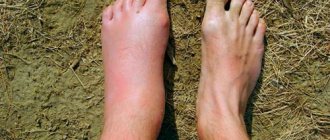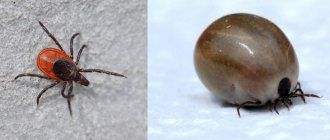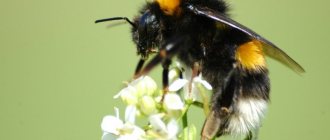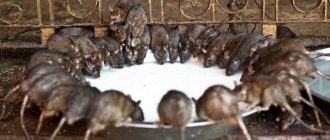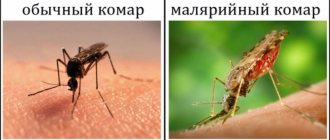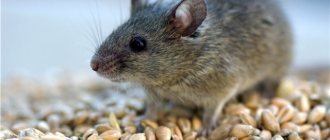Human attitudes towards rats are ambiguous. Some are afraid of them, citing the example of the Middle Ages, when the rat became the culprit of epidemics. Others hate them and try in every possible way to eradicate them. Others have not encountered them in life, so they are neutral towards them.
There is also a 4th category - people who keep this animal as a pet. It doesn't matter what category you fall into. Anyone can encounter this rodent, and the result of this encounter can be a rat bite. Then the question arises - what to do if bitten by a rat, what are the complications and consequences?
Briefly about rats
Rats have been known to mankind for a long time. In many writings about them there are negative lines, descriptions of terrible diseases that caused the death of hundreds, even thousands of people. Man has been fighting this unwanted neighbor for centuries, but its population is not decreasing. Their numbers increase every year, and the reason for this is the man himself, who arranges city dumps.
This is an excellent place of residence for rodents: here they arrange housing for colonies and find food for themselves.
Note! Every year, about 2 thousand people die from a bite. It is not the bite itself that is dangerous, but the diseases that can be transmitted through saliva.
Rodents are divided into 2 categories: domestic and wild. A domestic animal is rarely dangerous. They are bought in pet stores, where a veterinary permit or license is required. Then a person takes care of him: cleans the cage, feeds him, plays. Contact with wild representatives is kept to a minimum. Wild individuals settle in close proximity to humans:
- in city landfills;
- in the entrances;
- near trash cans in the yard;
- close to agricultural fields.
It is much less common to find an animal at home. They not only cause great discomfort with their proximity, but are also dangerous.
Rodent control products
There are many repellent devices, and the operating principle is based on ultrasonic and electromagnetic waves. Such devices do not kill rodents, but force them to leave the room by affecting the nervous system. What types of repellers exist and what are the differences in operation:
- Electronic repellers. The essence of these devices is to distribute magnetic pulses through an electrical wire, which is a powerful irritant for rats and mice. The range of these repellers is enough to cover the entire area of the room.
- Ultrasonic repellers. These devices act on the nervous system of rodents with high-frequency sound vibrations with changing frequencies, due to which the rats do not have time to get used to the ultrasound and quickly flee.
- Combined repellers. These devices combine a dual effect on pests: high frequency sound and low range of electromagnetic waves. This variable component does not allow rodents to adapt.
The choice of a specific repellent device depends on a number of factors: the number of rats and mice, the area of residence, the level of human comfort, etc. Each device has a different radius of influence, so choosing a repeller for a specific case will not be difficult. Their undoubted advantage is that they quickly drive rodents out of the house.
Features of rat behavior
Rats are small animals with their own behavioral characteristics. Knowing them, you can minimize the risk of unwanted contact.
Reasons for attacks on people
This rodent, despite its close proximity to humans, prefers to avoid meeting him. An attack is possible if he feels hungry for a long time, but has nothing to eat. At risk are children, paralyzed patients, and adults who are heavily intoxicated by alcohol or drugs.
Note! A rat loses its sense of fear if it becomes infected with any viral disease. They become aggressive and stop hiding.
There are frequent cases of attack by an animal driven into a corner. Do not insist on playing with your pet if it has already refused once. Otherwise, the bite cannot be avoided. There are even known cases of rat bites in pet stores - they are under constant stress.
An adult female may show aggression if she sees that her offspring are in danger or the nest has been broken.
When rats bite
This animal rarely attacks first. But if, while next to him, you wave your arms or a stick, stomp, or perform other sudden actions, then he will take an attack pose. It looks like this:
- she stands on her hind legs;
- the body sways from side to side;
- a loud squeak is made, followed by an attack.
How a rat bites
The teeth of this rodent are quite long. They constantly sharpen them on all objects that come their way. In action are:
- crackers and other food products;
- paper;
- tree;
- plastic;
- concrete and other building materials.
Human skin is very thin, it is quite easy to bite through it. The greatest danger is posed by the lower incisors - they are sharp and long. More often they bite fingers, arms, and legs. A rat bite looks like puncture wounds that bleed.
Differences between rat bites and bites of other animals
Sometimes it can be difficult to distinguish a rat bite from another animal bite. The injury can occur while sleeping or on the street. Particularly difficult is an injury sustained by a child or animal.
In this case, you need to carefully examine the affected area. If you can see marks from the upper and lower incisors close to each other, then this is often evidence of a rodent bite.
It doesn’t really matter whether it was a mouse, a vole, or a hamster. They are all equally dangerous to humans.
How to protect yourself from attack
To protect yourself and your loved ones from rat bites, you need to monitor the sanitary condition of your living space. If a concentration of animals is found in another place, special services should be called to destroy pests and prevent attacks on people.
You also need to know the reasons for the attack. If an animal is scared, you should not show aggression towards it. You should leave this place and not disturb the rodent.
A rat may also attack if it is infected with rabies. In this case, when you see a wild animal, you must immediately leave and inform special services.
It is also forbidden to touch a mouse brought by a cat.
Your pet should be checked periodically by a veterinarian and up to date with required vaccinations.
It is not recommended to pet someone's rodent, as it may react aggressively to a stranger.
First aid to the victim
If you have been bitten by a rat, you should immediately begin preventive action. Take your time to stop the bleeding - most of the pathogens will come out with the blood. It is recommended to apply additional pressure to the wound to help the blood flow out.
Rodents have sharp, long teeth. They penetrate deep under the skin. The top layers are drawn in quite quickly and prevent complete cleaning.
Rat bite.
First of all, you need to wash the wound with laundry soap. Then it is recommended to treat with hydrogen peroxide, iodine or brilliant green. If the wound is deep, try to push the solution inside as much as possible using a bulb or syringe. Then a bandage with levomekol is applied. Doctors sometimes prescribe antibiotics as a medical treatment.
Possible consequences of rat bites
Abrasions, puncture and lacerations, hematomas, bruises are possible consequences of an encounter with a rodent. However, with well-planned treatment and care for the injury, the risk of complications is minimal.
Wound festering is the most common of these. The affected area is opened and drained. This complication can be avoided if you properly care for the wound. In advanced cases, soft tissue may be deeply affected, requiring amputation.
What infections do rats spread?
Rats have long been considered carriers of diseases, including viral ones. Of these, the most dangerous are the following:
- Sodoku is a rat bite disease that is fatal in 10% of known cases. It can be avoided if treatment is started on time;
- tetanus - the risk of death after infection reaches 20–30%. Tetanus ranks third among the most dangerous diseases after rabies and plague. Even after recovery, dangerous consequences are possible in the form of heart paralysis, pneumonia, sepsis;
- Leptospirosis is transmitted not only through saliva. If you notice that the animal has chewed the bread, then it is better not to eat it. The disease is dangerous due to paralysis, myocarditis, renal failure, infectious-toxic shock;
- pseudotuberculosis - dangerous for the development of meningitis, polyarthritis, osteomyelitis, myocarditis.
The risk of contracting rabies is minimal, however, it is a rather dangerous disease that requires prompt treatment.
Tularemia vaccine: for whom
Usually, a vaccine against a disease is given to the population in an area of frequent infection with a given disease. Children from 7 years of age can receive the tularemia vaccine. After the first injection, the next vaccination of the body against tularemia is possible only after 5 years.
The vaccine contains strains of weakened tularemia bacteria. When a mild infection enters the blood, the immune system begins to build a natural protective barrier. It persists over subsequent years.
In some conditions of the body, it is better to cancel or postpone vaccination against the disease:
- problems with the immune system;
- temporary ill health - acute respiratory infections, flu and others;
- presence of immunity to tularemia;
- blood diseases;
- tumor-like neoplasms in tissues;
- connective fiber diseases;
- dermatological problems, various types of allergies;
- individual situations and so on.
We suggest you read: How to protect insulation from rodents
First actions after a rat bite
If you are bitten by a rat, do not panic. By adhering to a clear algorithm of actions, you can avoid harmful consequences.
- Rinse the wound under running water and then treat it with an antiseptic. Hydrogen peroxide, chlorhexidine, Miramistin, iodine or brilliant green are suitable for this. Don't wait for the bleeding to stop. The bites are usually deep and bleed for a long time.
- To avoid dirt getting into the wound and other mechanical damage, the affected area is bandaged.
- Observe the wound, and if you have the slightest doubt, consult a doctor.
It would be a good idea to get a preventive vaccination against rabies and other diseases, which will be offered at the nearest emergency room. Saliva is a breeding ground for bacteria and viruses.
What to do after being bitten by a pet rat
Pets are not considered carriers of diseases. However, if there is a wound, it is necessary to provide first aid to the victim and treat it thoroughly.
Change the dressings regularly and continue to treat the wound until it heals. If your health worsens, then this is a reason to contact a medical facility.
What to do if rats bite children in kindergarten
If a child, coming from kindergarten, complains that he was bitten by a rat, then not only therapeutic measures should be taken. Such a violation of the Sanitary Rules and Norms is an administrative offense.
Note! The teacher is obliged to monitor not only the children under his care, but also the order. Such a complaint requires contacting the Administration. If the problem is not resolved, then parents should write a complaint to the Sanitary and Epidemiological Service requesting an inspection. It is better to draw up a collective appeal, and attach to it copies of certificates from the health care facility where the doctor examined the injury.
Are bites from decorative rats and animals in pet stores dangerous?
If you are bitten by a pet rat or injured in a pet store, do not panic. Pets rarely show aggression. Most likely, they will not even bite through the skin. However, if the wound still bleeds, then it must be treated to avoid suppuration.
Also, pets and pet store animals are rarely carriers of dangerous infectious diseases.
Disease Prevention
Personal hygiene, working with gloves when in contact with possible sources of infection is the best infection prevention that is within your power. Enhanced immune protection - vaccination. But whether vaccination is necessary is up to you to decide.
Experts recommend vaccination only if the rat has a predisposition to developing diseases. For example, the rodent was purchased at the market or came into contact with wild animals.
Pets are not carriers of infections, and the formation of animal immunity is influenced only by living conditions, diet and compliance with hygiene rules. In veterinary medicine, vaccination of rats is carried out in case of indications from specialists and the presence of predispositions to the development of pathologies.
At a veterinary clinic, the animal may be given anti-sickness medication, anti-inflammatory drugs, or injections as part of complex therapy. No vaccine is given against diseases, since rodents have good natural immunity.
If a rat bites your pet
An adult pet rarely needs help when treating a wound. They themselves carefully lick the wound. The saliva of cats and dogs contains an enzyme that acts like an antiseptic. Only rare supervision is required on the part of the owner.
If a young pet is bitten, regular antiseptic treatment and bandaging will be required.
If the owner notices a change in the behavior or activity of the animal, then a veterinarian should be called. Many diseases require emergency specialist care. You should not make decisions or prescribe medications on your own.
What symptoms indicate infection?
The incubation period for most diseases ranges from several days to a couple of weeks. Characteristic symptoms of infection:
- elevated temperature;
- chills;
- feeling of weakness;
- gastrointestinal disorders, namely vomiting, diarrhea, lack of appetite, abdominal pain;
- pain in the bite area, suppuration;
- uncontrolled muscle contractions;
- insomnia.
If you notice similar symptoms, consult your doctor for a diagnosis. It is important to tell the doctor when the bite occurred. This is the main difficulty: by the time they go to a medical facility, patients forget about the injury received from the rodent.
Who is at risk of infection
The disease is quite dangerous. The main manifestations are:
- increased body temperature up to 40 degrees;
- weakness, fatigue and lethargy haunt the patient;
- some manifestations are similar to poisoning - diarrhea, vomiting, loss of appetite;
- inflammation of the lymphatic system - swelling and enlargement of nodes;
- after a while, the site of infection and the bite begins to tear;
- when the lesion is ripe, thick pus comes out of it.
These are not all the signs, because tularemia is quite mixed in symptoms when a new disease is added against the background of tularemia. It happens that a person becomes infected with pulmonary tularemia. Its symptoms are very similar to pneumonia, but not quite. The separation of sputum with pus signals tularemia.
Specific professions, such as agronomists, agricultural workers, people living in rural areas. For example, contact with contaminated soil, water, as well as contact with rodents, handling animal carcasses, tick bites, etc. are the most common cases of infection.
Tularemia is a disease quite dangerous for human life. Therefore, there is a way to protect yourself from infection with its pathogen. Vaccination is one of the best ways to prevent the disease.

